Motivation is defined as stimulating someone to achieve desired goals or take desired actions. It is a process that involves motives, behaviors, goals, and feedback. There are intrinsic and extrinsic types of motivation. Classical theories focused on fear/punishment and rewards while modern theories examine needs, expectations, and fairness. Motivation results from an interaction between individual factors like needs, expectations, and personal agency beliefs, and situational/organizational factors like rewards, fairness, and job design.



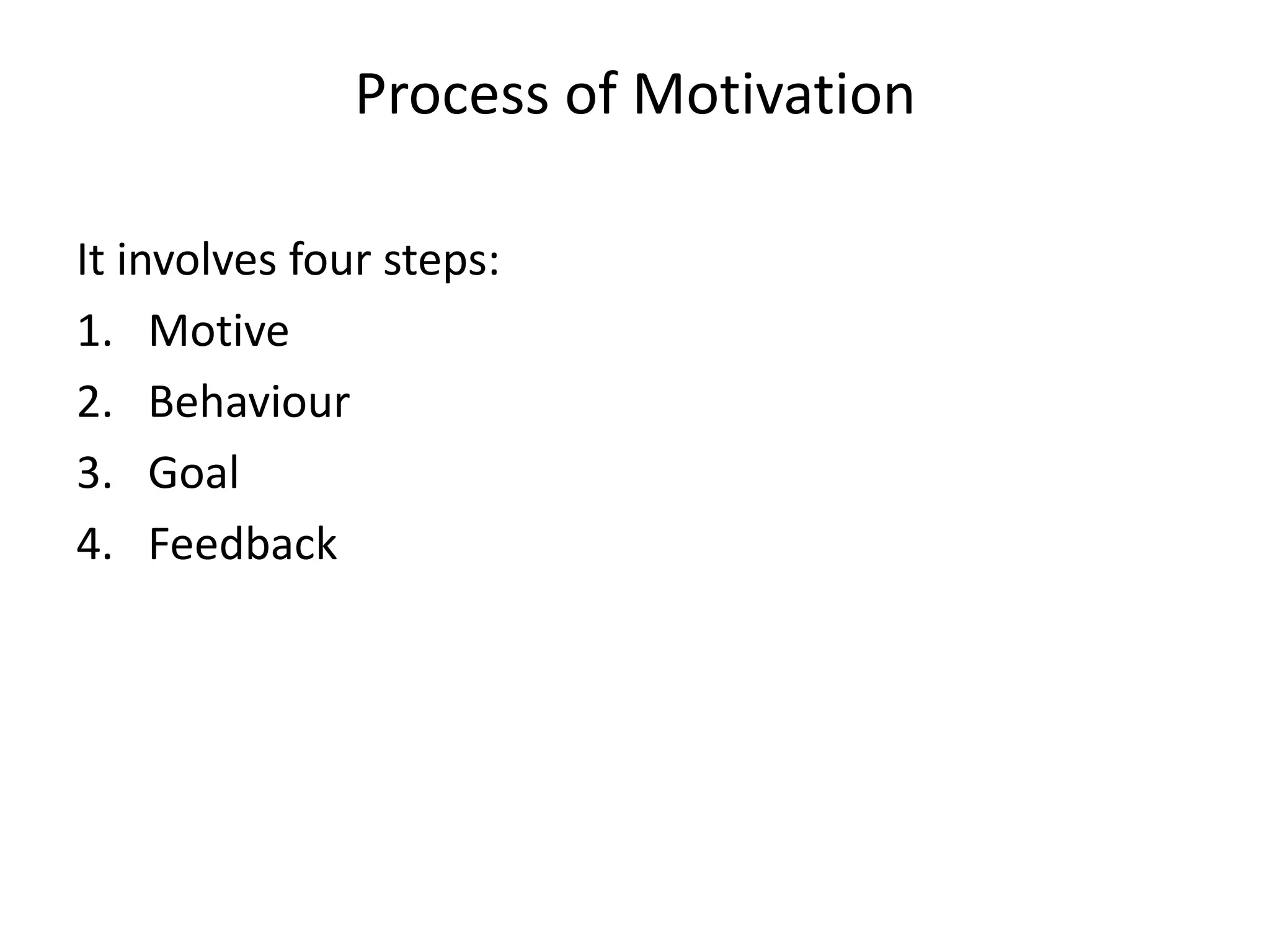
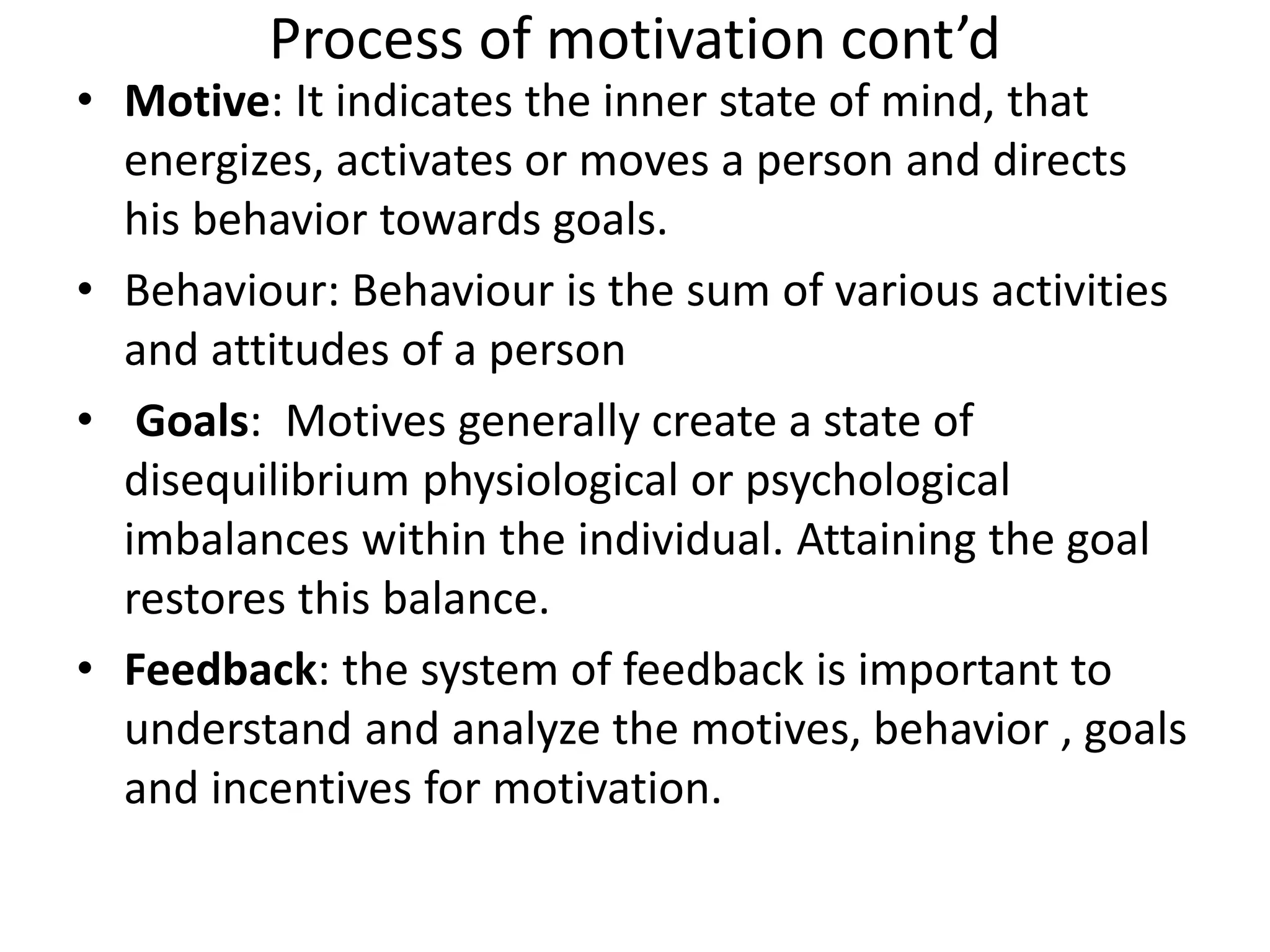




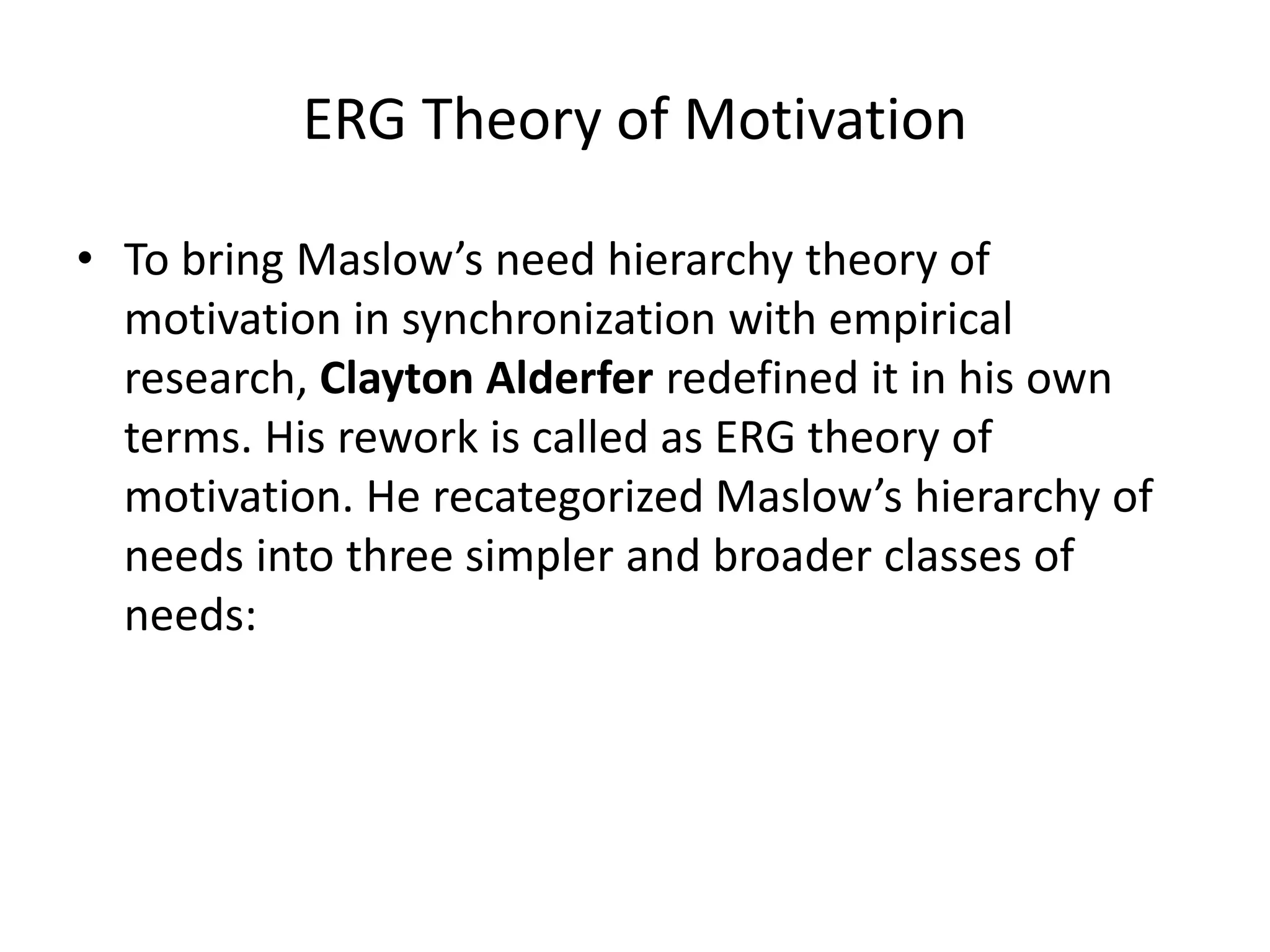



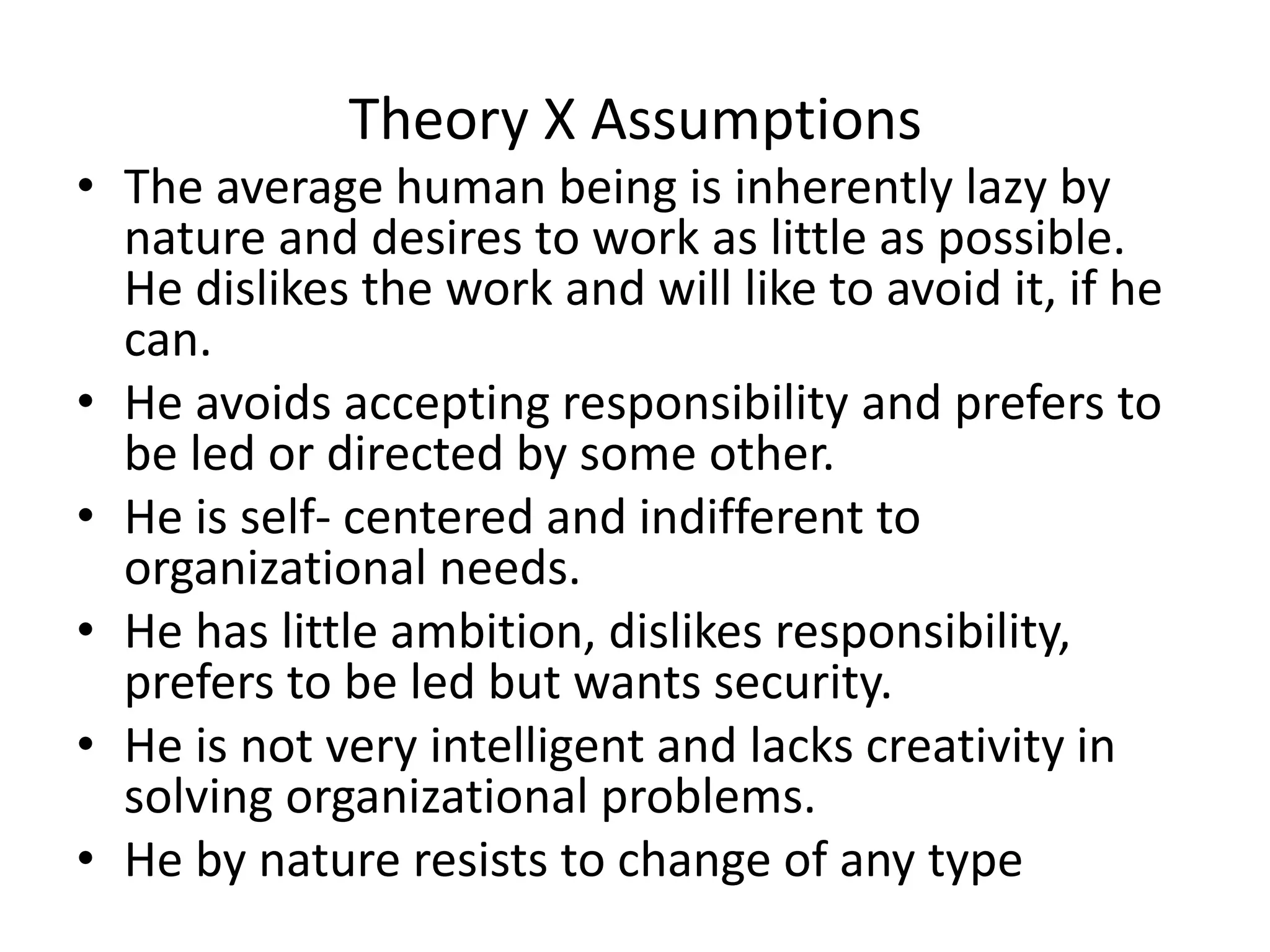

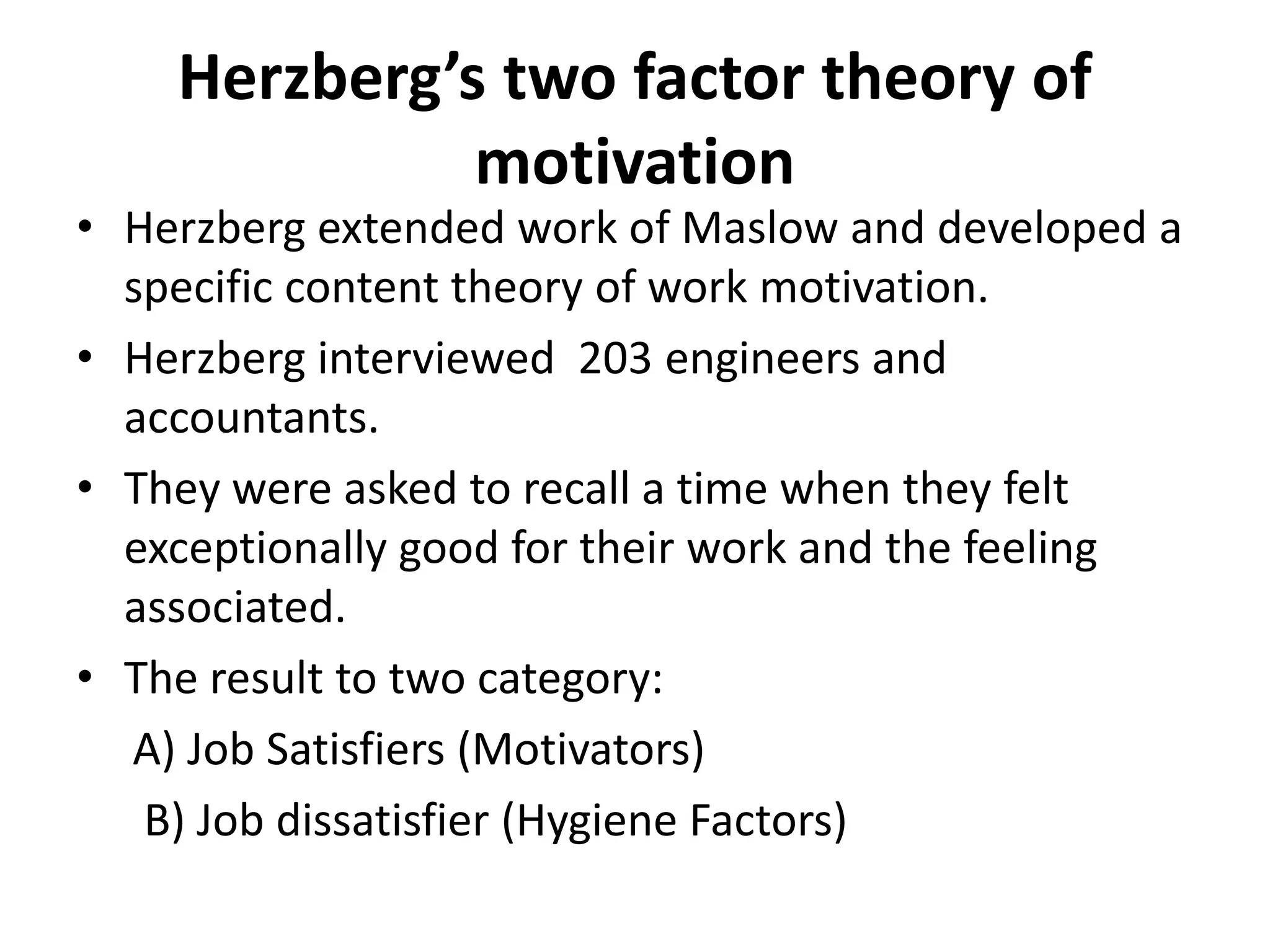

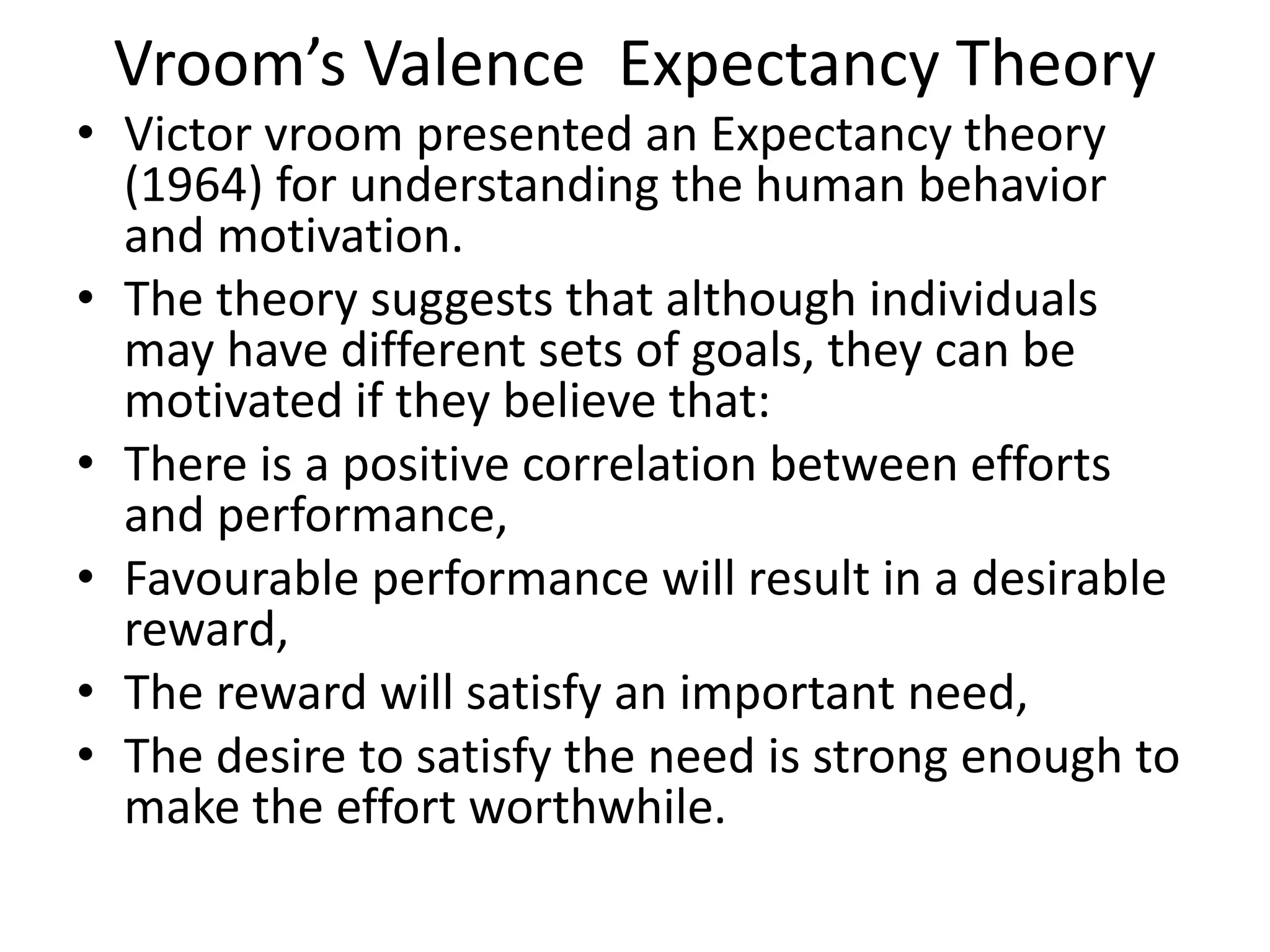
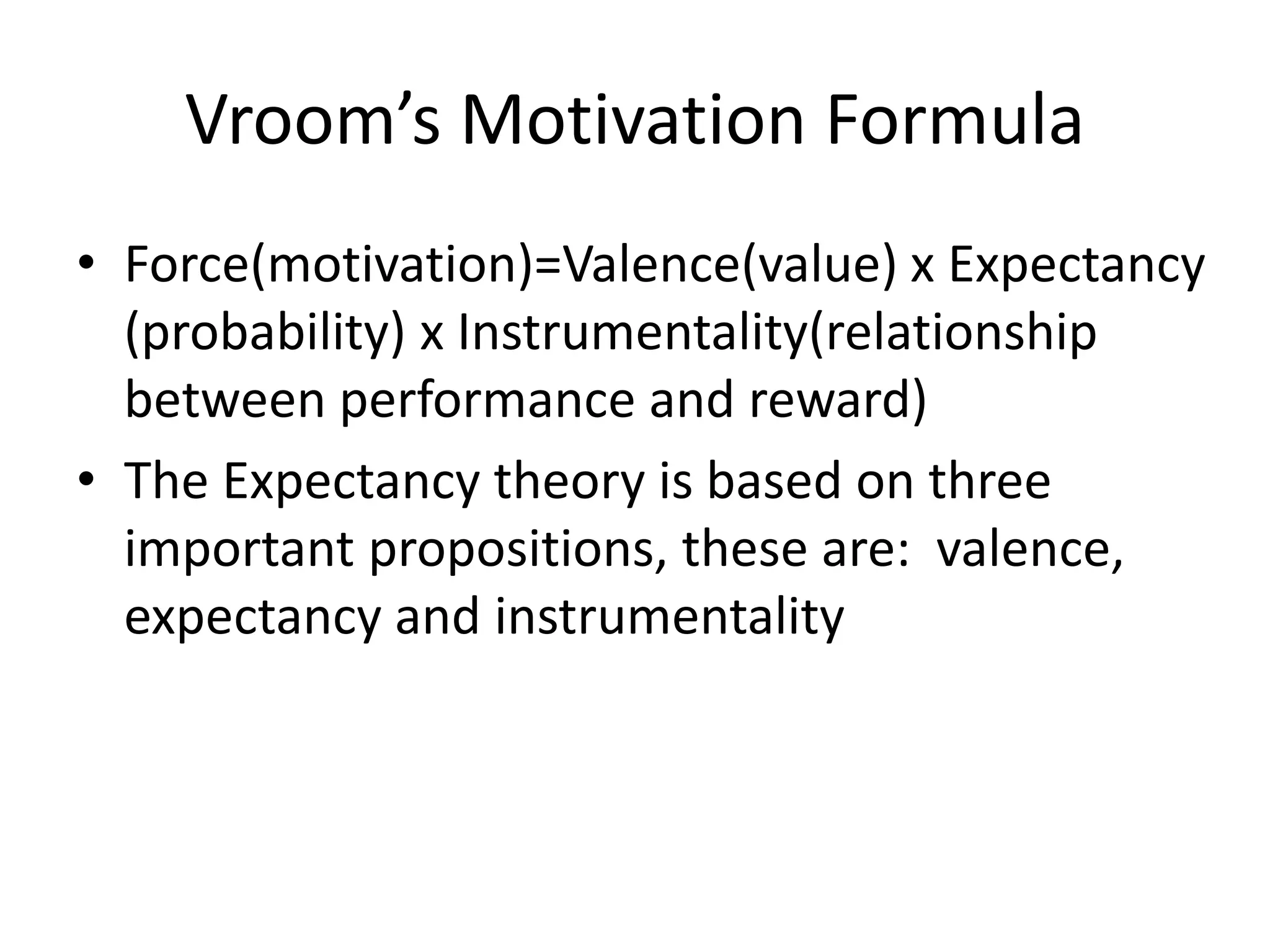

![• Valence
• Valence refers to the emotional orientations people hold
with respect to outcomes [rewards]. Management must
discover what employees value.
• Expectancy
• Employees have different expectations and levels of
confidence about what they are capable of doing.
Management must discover what resources, training, or
supervision employees need.
• Instrumentality
• The perception of employees as to whether they will
actually get what they desire even if it has been promised
by a manager. Management must ensure that promises of
rewards are fulfilled and that employees are aware of that.](https://image.slidesharecdn.com/7308895-220816155345-c4967582/75/7308895-ppt-21-2048.jpg)






